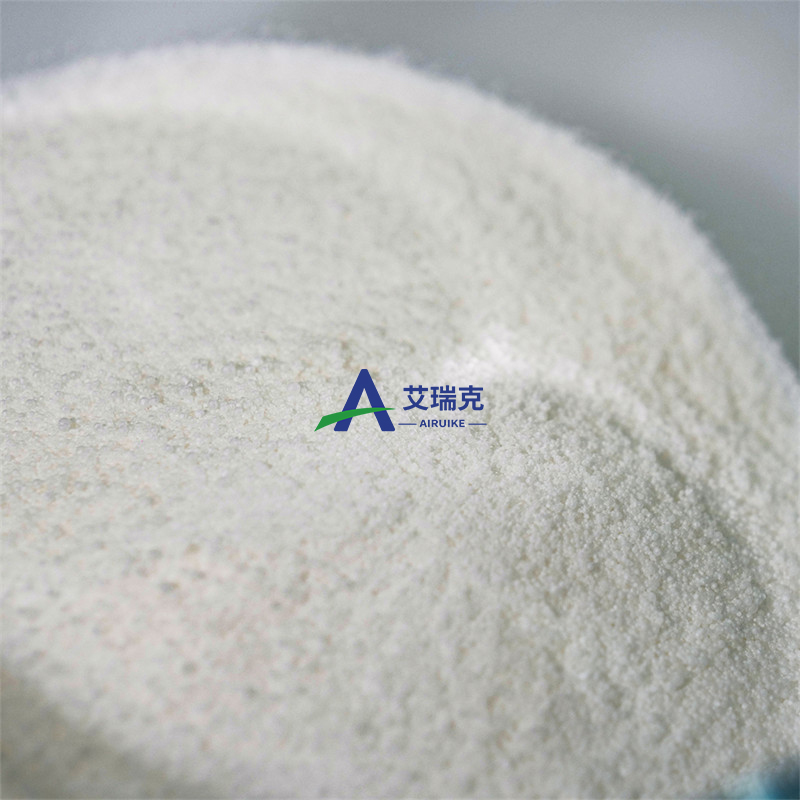-
Categories
-
Pharmaceutical Intermediates
-
Active Pharmaceutical Ingredients
-
Food Additives
- Industrial Coatings
- Agrochemicals
- Dyes and Pigments
- Surfactant
- Flavors and Fragrances
- Chemical Reagents
- Catalyst and Auxiliary
- Natural Products
- Inorganic Chemistry
-
Organic Chemistry
-
Biochemical Engineering
- Analytical Chemistry
-
Cosmetic Ingredient
- Water Treatment Chemical
-
Pharmaceutical Intermediates
Promotion
ECHEMI Mall
Wholesale
Weekly Price
Exhibition
News
-
Trade Service
And to explore the mysteries of neuroscience with rigorous academic and logical thinking︱Editor by Wang Sizhen︱Wang Sizhen More and more evidence shows that tau, the microtubule-associated protein tau (MAPT), is related to the pathogenesis of a series of neurodegenerative diseases.
Such as Alzheimer's disease (AD), autism and epilepsy, so these diseases are also called tau protein diseases.
With the rapid aging of the world's population, the number of patients with tau protein diseases is also increasing.
Tau protein is abundant in neurons and interacts with microtubules, but its main biological function in the brain has yet to be determined.
The treatment of diseases that target tau protein is also attracting more and more attention, and of course it is also full of challenges.
Sex.
On February 26, 2021, the laboratory of Professor Lennart Mucke of the Gladstone Institute of Neurological Disease in the United States published a titled Tau: Enabler of diverse brain disorders and target of rapidly evolving therapeutic strategies on Science.
Review article.
The author reviewed the progress in the study of tau protein mechanisms in brain diseases, and explored scientific ideas and approaches to promote field research and drug development.
It is well known that tau protein can stabilize microtubules.
However, many in vivo experiments have shown that the reduction or ablation (ie disappearance) of tau protein does not change many neural properties and processes that depend on microtubules, including neuronal integrity, axonal transport, synapse formation, and the complex brain Function and so on.
In some studies, although reducing tau has little effect on other brain regions that are not manipulated, it can prevent or reduce abnormal cell signals, neural network dysfunction (such as epileptic activity), and improve the effects caused by different disease processes Behavioral changes, etc.
, suggesting that the activity of tau protein is necessary for other pathogenic triggers.
Different subtypes of tau protein (A) and post-translational modification (B) (Image source: C.
-W.
Chang et al.
, Science 2021; 371: eabb8255) The interaction of tau with many other proteins can lead to harmful functions Obtained, this may be related to the abnormal structure and assembly of the tau protein, or it may be that the abnormal structure and assembly lead to the acquisition of harmful functions.
Because the abnormal form of tau triggers a large number of intricate pathological mechanisms, the therapeutic effect achieved by targeting individual (or single) downstream mechanisms may be very limited.
In addition, in disease models without abnormal tau protein content, the reduction of tau protein can also prevent or alleviate neural network dysfunction and behavioral abnormalities, which indicates that the pathological mechanism of tau protein is not only protein aggregation and transmission, but also There are other unknown mechanisms; this also suggests the complexity of the pathological mechanism of tau protein.
Because of this, many therapeutic strategies targeting tau are aimed at solving this complexity.
Reducing the overall level of tau protein seems to have more therapeutic potential, because this strategy avoids some unresolved problems, such as which form of tau protein and which downstream mechanisms are the most harmful under any given condition.
The physiological function and disease-causing function (AD) of tau protein (picture source: C.
-W.
Chang et al.
, Science 2021; 371: eabb8255) However, unfortunately, the development of many neurodegenerative diseases currently It failed.
To a large extent, this is because our understanding of the mechanism of our disease is not comprehensive enough.
It may also be because we still lack basic knowledge, fail to understand the data from multiple angles, and fail to explore the complexity of the methodology. This review highlights our research progress in filling the gaps in tau protein knowledge and the required methodology.
It also highlights the challenges that exist in the process of transforming tau protein basic research into disease treatment methods and how to overcome these challenges.
Practical strategies.
Targeted therapy strategy of tau protein (picture source: C.
-W.
Chang et al.
, Science 2021; 371: eabb8255) For the future, the main physiological function of tau protein in the adult and aging brain is What remains to be studied further.
In addition, in order to strictly compare the different forms and pathological mechanisms of tau, especially to compare their relative effects on neuronal function and survival in the body, it is necessary to develop more accurate experimental models and techniques.
And in order to develop truly effective biomarkers and treatments, it will be vital to strictly distinguish the relationship between correlation effects and causal effects.
For AD and other neurodegenerative diseases, only by accurately defining the main factors driving neuronal dysfunction and death, especially revealing what role the tau protein plays (such as a causal role or a facilitating role), can it be treated rigorously And the development of disease treatment strategies, such as the overall reduction of tau protein levels; at the same time, it is possible to further verify the scientific nature of more specific targets and methods.
Challenges and needs in tau protein research and targeted therapy (picture source: C.
-W.
Chang et al.
, Science 2021; 371: eabb8255) Some research strategies have been incorporated into early AD for the purpose of reducing the overall level of tau protein In clinical trials, these strategies include the development of antisense oligonucleotides targeting tau protein and the development of small molecule drugs that regulate the production or degradation of tau protein.
The most ideal treatment plan with tau protein as the target is effective for various tau protein diseases, cheap, and easy to obtain.
In addition, it has good therapeutic compatibility for people taking other drugs. Summary picture: Potential tau protein pathology (picture source: C.
-W.
Chang et al.
, Science 2021; 371: eabb8255) Original link: https://science.
sciencemag.
org/content/371/6532/ Recommended eabb8255 high-quality scientific research training courses [1] Patch clamp and optogenetics and calcium imaging technology seminar (February 27-28) (April-May 2020 courses can be booked) [2] Online ︱ single cell sequencing Workshop on Data Analysis and Research Thoughts (January 16-17, 21) (can be booked for April-May 2021) plate making ︱ Wang Sizhen end of this article
Such as Alzheimer's disease (AD), autism and epilepsy, so these diseases are also called tau protein diseases.
With the rapid aging of the world's population, the number of patients with tau protein diseases is also increasing.
Tau protein is abundant in neurons and interacts with microtubules, but its main biological function in the brain has yet to be determined.
The treatment of diseases that target tau protein is also attracting more and more attention, and of course it is also full of challenges.
Sex.
On February 26, 2021, the laboratory of Professor Lennart Mucke of the Gladstone Institute of Neurological Disease in the United States published a titled Tau: Enabler of diverse brain disorders and target of rapidly evolving therapeutic strategies on Science.
Review article.
The author reviewed the progress in the study of tau protein mechanisms in brain diseases, and explored scientific ideas and approaches to promote field research and drug development.
It is well known that tau protein can stabilize microtubules.
However, many in vivo experiments have shown that the reduction or ablation (ie disappearance) of tau protein does not change many neural properties and processes that depend on microtubules, including neuronal integrity, axonal transport, synapse formation, and the complex brain Function and so on.
In some studies, although reducing tau has little effect on other brain regions that are not manipulated, it can prevent or reduce abnormal cell signals, neural network dysfunction (such as epileptic activity), and improve the effects caused by different disease processes Behavioral changes, etc.
, suggesting that the activity of tau protein is necessary for other pathogenic triggers.
Different subtypes of tau protein (A) and post-translational modification (B) (Image source: C.
-W.
Chang et al.
, Science 2021; 371: eabb8255) The interaction of tau with many other proteins can lead to harmful functions Obtained, this may be related to the abnormal structure and assembly of the tau protein, or it may be that the abnormal structure and assembly lead to the acquisition of harmful functions.
Because the abnormal form of tau triggers a large number of intricate pathological mechanisms, the therapeutic effect achieved by targeting individual (or single) downstream mechanisms may be very limited.
In addition, in disease models without abnormal tau protein content, the reduction of tau protein can also prevent or alleviate neural network dysfunction and behavioral abnormalities, which indicates that the pathological mechanism of tau protein is not only protein aggregation and transmission, but also There are other unknown mechanisms; this also suggests the complexity of the pathological mechanism of tau protein.
Because of this, many therapeutic strategies targeting tau are aimed at solving this complexity.
Reducing the overall level of tau protein seems to have more therapeutic potential, because this strategy avoids some unresolved problems, such as which form of tau protein and which downstream mechanisms are the most harmful under any given condition.
The physiological function and disease-causing function (AD) of tau protein (picture source: C.
-W.
Chang et al.
, Science 2021; 371: eabb8255) However, unfortunately, the development of many neurodegenerative diseases currently It failed.
To a large extent, this is because our understanding of the mechanism of our disease is not comprehensive enough.
It may also be because we still lack basic knowledge, fail to understand the data from multiple angles, and fail to explore the complexity of the methodology. This review highlights our research progress in filling the gaps in tau protein knowledge and the required methodology.
It also highlights the challenges that exist in the process of transforming tau protein basic research into disease treatment methods and how to overcome these challenges.
Practical strategies.
Targeted therapy strategy of tau protein (picture source: C.
-W.
Chang et al.
, Science 2021; 371: eabb8255) For the future, the main physiological function of tau protein in the adult and aging brain is What remains to be studied further.
In addition, in order to strictly compare the different forms and pathological mechanisms of tau, especially to compare their relative effects on neuronal function and survival in the body, it is necessary to develop more accurate experimental models and techniques.
And in order to develop truly effective biomarkers and treatments, it will be vital to strictly distinguish the relationship between correlation effects and causal effects.
For AD and other neurodegenerative diseases, only by accurately defining the main factors driving neuronal dysfunction and death, especially revealing what role the tau protein plays (such as a causal role or a facilitating role), can it be treated rigorously And the development of disease treatment strategies, such as the overall reduction of tau protein levels; at the same time, it is possible to further verify the scientific nature of more specific targets and methods.
Challenges and needs in tau protein research and targeted therapy (picture source: C.
-W.
Chang et al.
, Science 2021; 371: eabb8255) Some research strategies have been incorporated into early AD for the purpose of reducing the overall level of tau protein In clinical trials, these strategies include the development of antisense oligonucleotides targeting tau protein and the development of small molecule drugs that regulate the production or degradation of tau protein.
The most ideal treatment plan with tau protein as the target is effective for various tau protein diseases, cheap, and easy to obtain.
In addition, it has good therapeutic compatibility for people taking other drugs. Summary picture: Potential tau protein pathology (picture source: C.
-W.
Chang et al.
, Science 2021; 371: eabb8255) Original link: https://science.
sciencemag.
org/content/371/6532/ Recommended eabb8255 high-quality scientific research training courses [1] Patch clamp and optogenetics and calcium imaging technology seminar (February 27-28) (April-May 2020 courses can be booked) [2] Online ︱ single cell sequencing Workshop on Data Analysis and Research Thoughts (January 16-17, 21) (can be booked for April-May 2021) plate making ︱ Wang Sizhen end of this article







